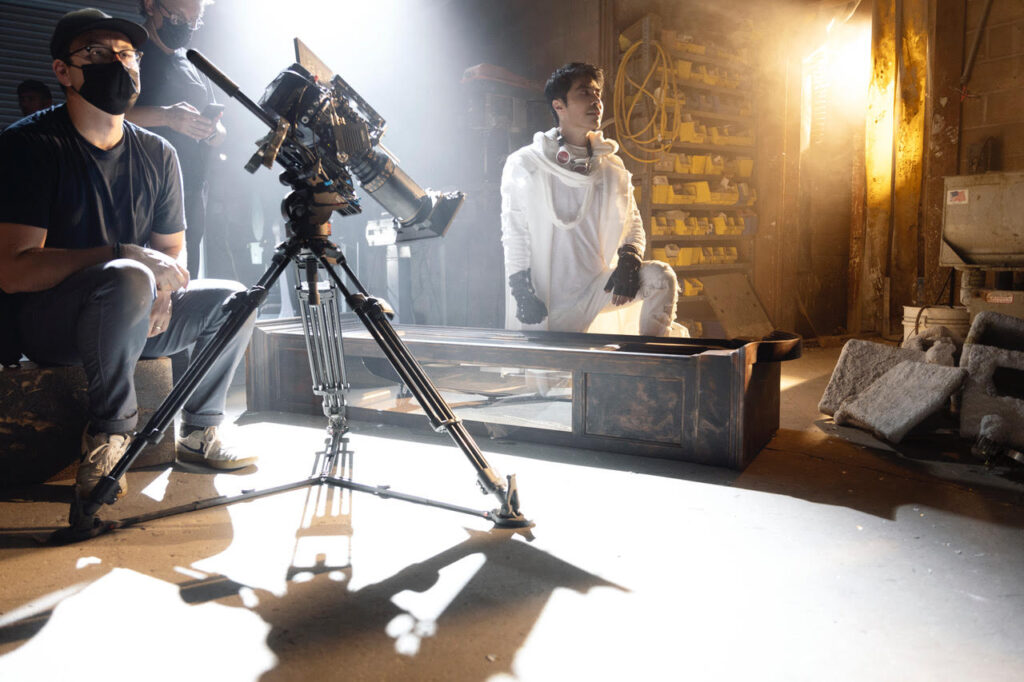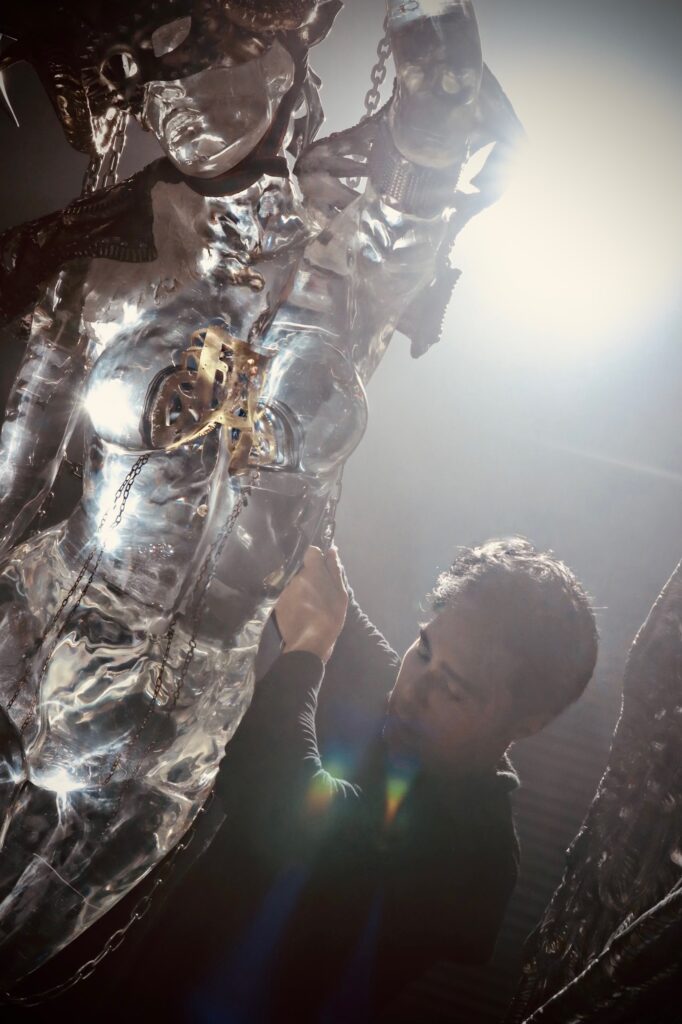( ENSPIRE Entertainment ) The Process of Turning Sculpture into Film
ENSPIRE Contributor: Petra Wolf
Sir Daniel Winn‘s latest short film “Creation” is currently in pre-production for its feature-length version. Winn is an internationally recognized artist, fine-art curator, entrepreneur, and highly respected philanthropist. In recognition of his direct support of humanitarian causes, he also received a knighthood in 2018 under the Princely House of Schaumburg-Lippe-Nachod. A child refugee to the United States from Vietnam, Sir Daniel Winn is committed to assisting others and has raised millions of dollars for non-profit aid in the United States and Asia.
The original short film was produced by Emmy-winning producer Georges Chamchoum and received a feature in Variety. It debuted at the Asian World Film Festival in Los Angeles in 2022. Sir Daniel Winn’s film also got accepted into the Experimental Dance & Music Film Festival, winning Best Long Format Short Film. The film also won Best Cinematography at the Venice Shorts Film Festival. Along with the feature-length version of “Creation”, Sir Daniel Winn is working on a biopic about his own life.

ENSPIRE met with Sir Daniel Winn to talk about his inspirations and his involvement in both film and philanthropy.
What do you find is the key difference between sculpting, painting, and film?
All three styles of artistic expression communicate a visual language very differently. Painting is two-dimensional whereas sculptures are three-dimensional. Film has both qualities with a two-dimensional aspect that has a three-dimensional feel because of the movement and the sound. Compared to paintings and sculpting, film evokes more of your senses. For me, all three are significant forms of communicating a universal language. I’m very excited that I can communicate with all three.
What surprised you about audience reactions to the first debut of Creation at AWFF?
I am pleasantly surprised that a lot of viewers understood my philosophy in the short film even without any dialogue. They all seemed to embrace and understand the profound concept. However, I believe each individual had their own interpretation of the film. Although there was no dialog in the film, I felt the film communicated through many different languages and that it’s interpreted differently depending on the individual perceiving it. The film can be viewed in terms of philosophy, science, religion, spirituality, visuals, and emotions. I was surprised how everyone saw the film in a different light. It was very rewarding.
What do you predict is going to be the biggest challenge of turning a short film into a feature?
A feature film of this caliber requires a certain level of detail and complexity you can’t fit into an 18-minute short film. By that, I mean that our creative team, consisting of award-winning director and cinematographer Jordan Schulz and writer Andrew Creme, will need to take an innovative approach that transcends modern storytelling. The biggest challenge for a film without dialog is retaining interest throughout — and stunning audio and visuals alone won’t be enough. That means there needs to be a fair amount of complexity in the story itself. Whether it’s internal or external conflict, we want to understand the ins and outs of the hero and feel connected to them as they navigate their journey. Together these elements will help immerse audiences in what we hope is an unforgettable experience.
Was the film always without dialogue or did that change over time?
I always wanted to create an art movie without dialogue to communicate visual language through film, just like how I communicate through my paintings and sculptures. This form of expression is conducive to an emotional and spiritual connection. Similar to looking at a painting or sculpture, we filmed “Creation” to be viewed in the same way. My goal is to have a movie that is universal in its format so it can be interpreted internationally — for it to transcend communication to a different level of language. I wanted to cross over the limits of verbal communication and rely on a connection through emotions by seeing and hearing what the film wants to convey.
What led you into the world of philanthropy?
Growing up as an orphan, I struggled with poverty and I wanted other orphans to have better opportunities and experiences in this world. I was fortunate enough to move past my disadvantages and could share my artistic visions and I hope to give the same opportunities to orphans. Although my philanthropic purpose is more focused on children, it’s also for myself so that I can feel I’m doing something impactful and I will continue this purpose. I feel it’s my duty and responsibility. I just feel that by myself I cannot accomplish what I need to do in this realm, so I want to provide additional resources so that others can also contribute to this world and continue my legacy.
Do you have plans to continue your philanthropy or is your current focus on the films?
I plan to continue my philanthropy, It’s part of my being because I grew up poor and I understand what it’s like to have nothing and what it’s like to then be afforded opportunities. If it’s successful, it will help create more awareness and prestige for me as an artist, making my artwork more recognizable, and hopefully increase more sales. The more income from my art, the more I can contribute to philanthropy. The art films I am creating would create more awareness and exposure to the world, which will bring my message of universal truth. It’s my hope that those who embrace my message will also be able to enhance themselves and make a difference in their lives. It’s all related, whether philanthropy is through film, through financial donation, or through mentoring art, all of it can help make this world a better place and enhance humanity. I believe that philanthropy comes in many forms, and I will continue to do my part in many forms during my lifetime.

Winn features sculptures of Creation at his gallery, the Winn Slavin Fine Art Gallery. The gallery, one of the most prestigious art galleries in Beverly Hills, is situated on the famed Rodeo Drive. In 2019, the NEST Foundation in Hollywood also awarded Daniel Winn the “Philanthropic Artist of the Year.” When asked about his future by Golden Globe Awards he said he aims for his art philosophy, “Existential Surrealism” to become a household name.

Related Articles: Director and Producer Jayson Johnson Shares His Journey in Filmmaking, New Indie Film: Crescent Gang







